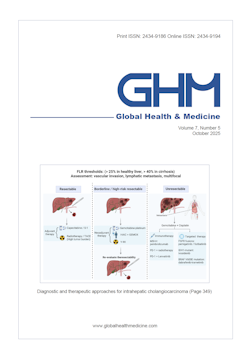Global Health & Medicine 2021;3(3):149-156.
Proton therapy for patients with esophageal cancer: History, characteristics, clinical outcome and future direction of proton beam therapy
Karube M, Nakayama H
After the second war, Wilson who participated in development of the atomic bomb in Los Alamos studied peaceful use of atomic energy and proposed a property of proton beam that has potential to treat cancer. According to his proposal, the first patient was treated with proton beam therapy at the University of California Berkley in 1954. The first series of proton beam therapy for patients with esophageal cancer was reported from Japan in 1993. After that many proton facilities in Japan reported the clinical outcome of patients with esophageal cancer. Many dosimetric and clinical studies showed proton beam therapy for esophageal cancer was less toxic than photon beam therapy, however there is a paucity of randomized trials and evidence that proton beam therapy has clearly superior survival compared to photon therapy. Only one randomized trial has been conducted to study less toxicity for proton beam compared with intensity modulated radiotherapy (IMRT), which was stopped early because toxicities of IMRT were higher. A phase III study comparing overall survival between proton beam therapy and IMRT is now activated. A cost reduction for proton therapy is necessary to facilitate patient care and establishment of clinical evidence.
DOI: 10.35772/ghm.2020.01083







